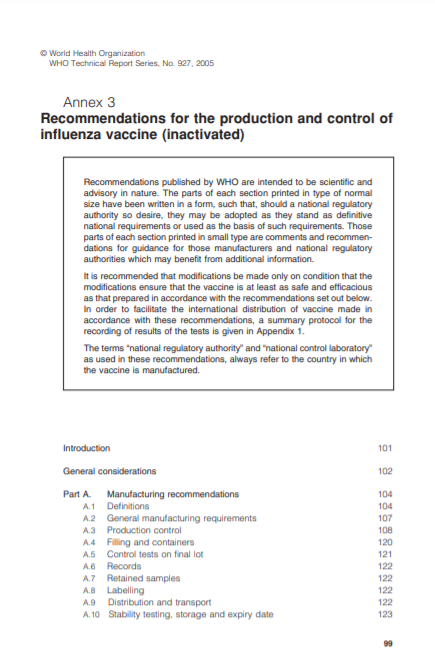Recommendations for the production and control of influenza vaccine (inactivated), Annex 3, TRS No 927

Overview
In its twenty-ninth report, the Committee recognized that technical developments had completely altered the method of measurement of the haemagglutinin content of the vaccines and that the International Reference Preparation of Influenza Virus Haemagglutinin (Type A) established in 1967 was no longer appropriate for controlling the haemagglutinin content of inactivated influenza vaccines because it no longer represented the haemagglutinin of the prevalent strains. Accordingly, the International Reference Preparation was withdrawn, and the Committee recommended that the requirements for inactivated influenza vaccine should be revised. Revised requirements were approved by the WHO Expert Committee on Biological Standardization in 1978 and modified in 1990.
Since 1990, there have been significant new developments in methods of influenza vaccine production resulting from: increased development of mammalian cell lines for vaccine production; increased experience in use of adjuvants; and rapid development of reverse genetics technologies for generation of vaccine viruses. There has also been considerable effort directed to pandemic planning to ensure that safe, effective vaccines can be quickly produced in response to a pandemic emergency. Consequently it has become necessary to revise the requirements to reflect these new developments. In accordance with current WHO policy, the revised document is renamed as “Recommendations”.
Full version of the WHO Technical Report Series N° 927
